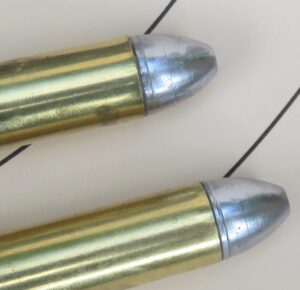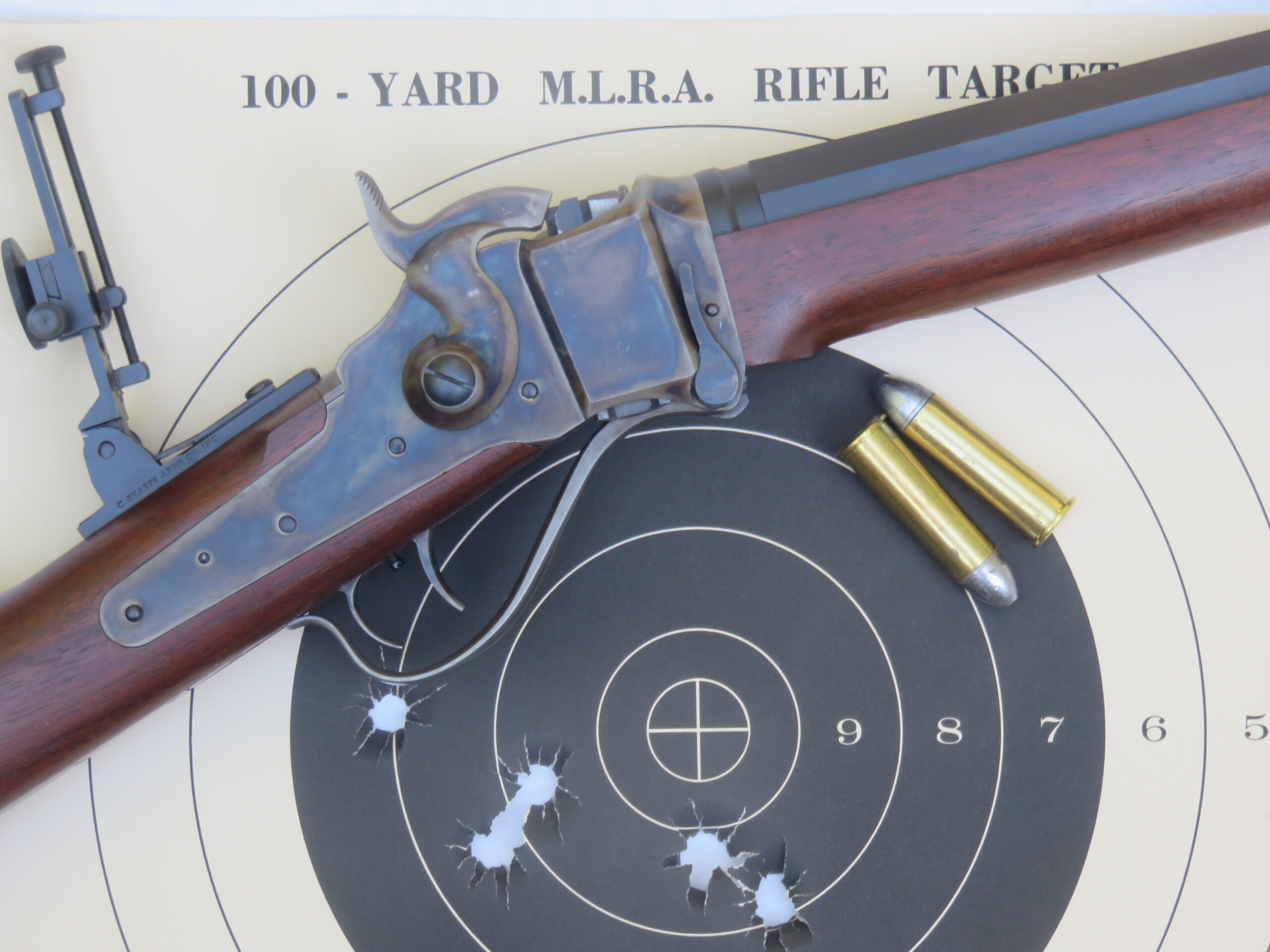
By Mike Nesbitt | Contributing Editor
With three segments of Black Powder Cartridge reloading already behind us, we’re now going to talk about loading for the straight wall cases.
This is where other discussions on black powder cartridge reloading usually begin.
One big difference, in my experience, with loading the straight cases instead of the bottleneck brass is that compression of the powder becomes a standard thing with full or nearly-full black powder loads. This is best done while using a compression die, or a compression plug in the standard expander die. (Most die sets for reloading straight-walled cases include three dies; sizing, expander, and seating dies.) There is a fairly easy way to get around this if you don’t have a compression die for the caliber you are reloading. The standard expander die can be used just as long as that expander die does not also hold the de-capping pin.
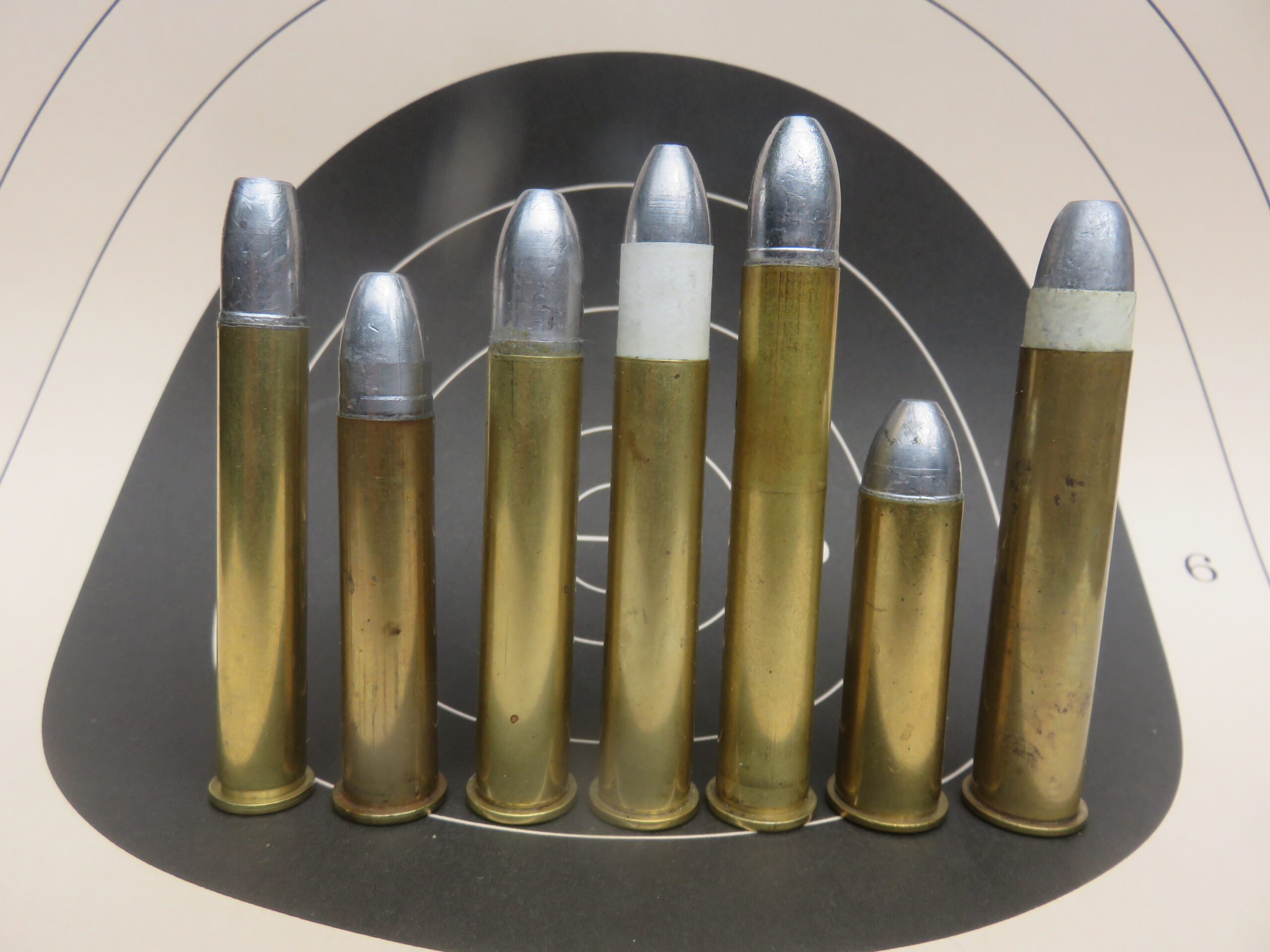
The way to use an expander die for powder compression is rather simple. First, be ready by having the brass sized (if you are going to re-size the cases, more about that later), expanded, re-primed, and ready to accept the powder charge. Have some over-powder wads handy for the caliber you are using. Such wads are available from John Walters at 405-799-0376, priced at $20 per thousand plus $1 for shipping, any caliber size.
Wads are made in various thicknesses and I prefer the .060” wads to give the base of the bullet the most protection. Charge the case with powder, with or without a drop tube, then put a wad over the powder. Back off the expander die in the press (don’t re-adjust the die, just back it off) and “test it” with the case holding the charge of powder. The expander die will force the wad down on the powder very nicely.
Take the case with the compressed powder out of the press and use something thin. I mostly use a small Allen wrench to feel or measure the depth of the wad. Then with that measurement, check along the side of the bullet you’ll be using to see if the powder compression is too much, or too little, or maybe right on. Let’s guess that the wad needs to go deeper and the compression is not enough. Turn the die down again, perhaps one revolution at a time, until the wad is deep enough in the case for the bullet to be accepted without further compression. Remember that trying to compress the powder with the bullet usually ends with a deformed bullet.
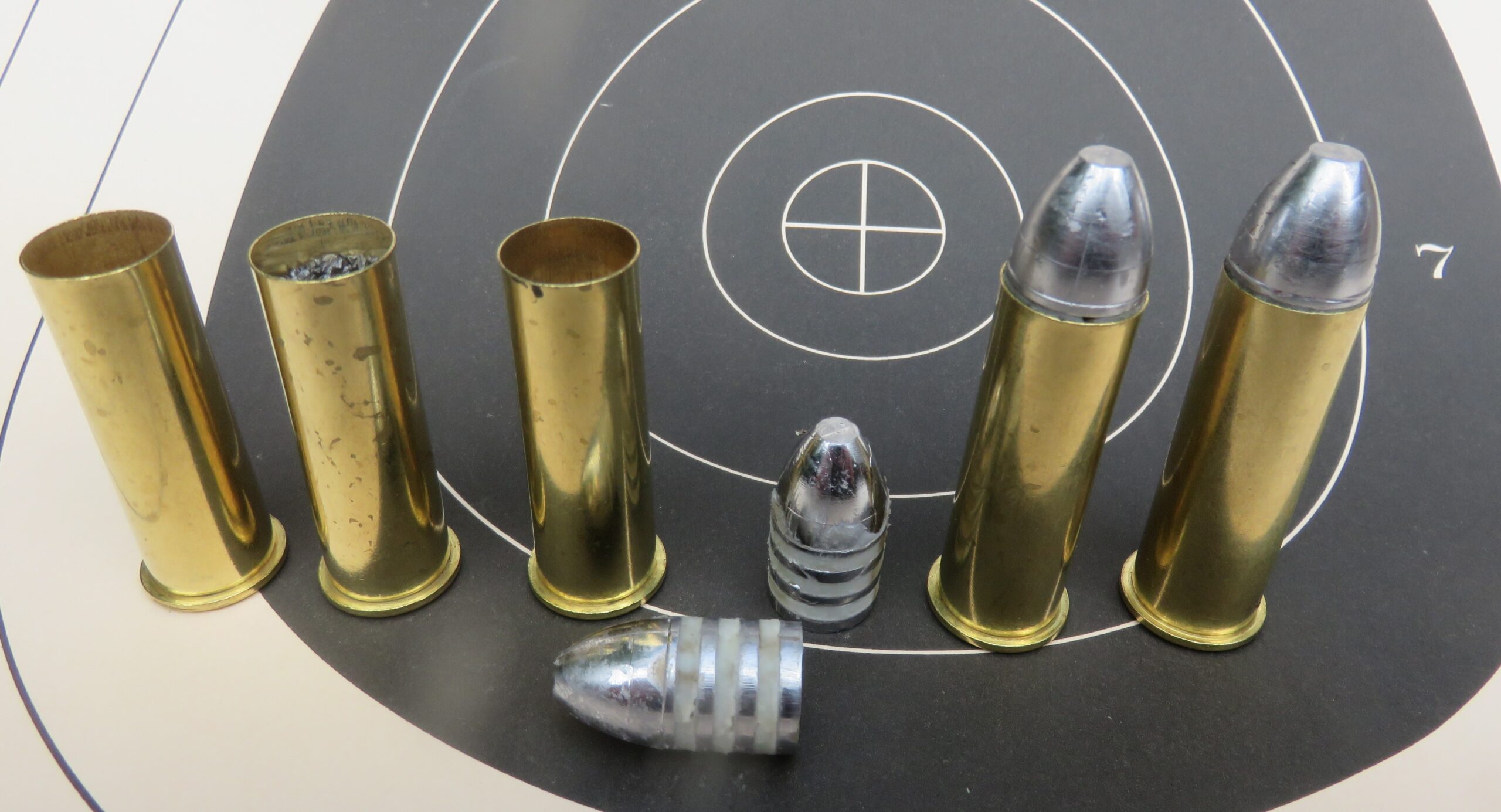
Once the needed depth is found, I’ve been able to run all of the cases, charged with powder, through the expander die without having it move even though the set-ring has not been tightened down to the top of the press. This method has worked very well for me but you must use the over-powder wads to do it.
Now, about re-sizing, for my reloading. I generally re-size all of my bottleneck cases but, just as generally, I don’t re-size my straight cases. Admittedly, I hadn’t thought about that until now, while writing about it. And some very good shooters maintain that the cases must be re-sized to be sure of getting consistent neck tension on the bullets, for the best accuracy. In my experience this has not been a proven point but perhaps that’s just my bad shooting… At any rate, if I’m loading straight walled cases that will be fired in the gun they were fire-formed for, I see no need to re-size the cases when they’re going to be loaded with grease-groove bullets.
With paper patched bullets, that’s a different story which will be explained in detail in the next segment of our black powder cartridge reloading series.
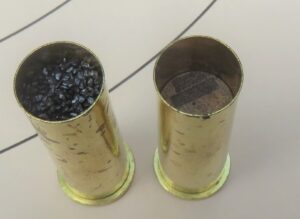
So, usually my first step in reloading these straight-walled cases, assuming of course that the brass is already de-capped and cleaned, is to run them through the expander die. Usually this is enough to straighten any of the case mouths which might have been squeezed out of round and it also slightly bells the mouth of the case to accept the bullet. (If the case has been deformed, such as by being stepped on, be sure to re-size it if that is necessary, to restore the case’s shape.) After all of the cases are run through the expander die, they should be very uniform in appearance and all are ready to be re-primed.
The straight-walled cases for this discussion include the .40/70 Sharps Straight, the .45/70 and the .45/90, the good old .50/70 and the longer .50/90 Sharps. There is really no difference in the technique of loading those cartridges other than using different dies, loads, and bullets. In order to site a specific example, I’ll describe the loading steps I use to complete some full loads for the good old .50/70 Government. (The .50/70, after all, is one of my very favorites.)
After we’ve run our de-capped and cleaned fired cases through the expander die, and I’ll repeat once more that our loads are intended to be fired in the rifle the brass was used in, otherwise they very likely might need to be resized first, it is time to prime the brass. Then, with all of the brass re-primed (I like Federal Large Rifle primers) it is time to add the powder.
For this example, the powder I’m using is Swiss 1 1/2Fg and the powder charge is a full 70 grains. In the photo of the case with the charge of powder in it, the powder was added through a 24-inch drop tube. The 70-grain powder charge will still fit inside the case if the drop tube is not used but it will sit higher so the drop tube is helpful.
Next, back off the expander die in the press, as I’ve already explained, and start an over-powder wad into the mouth of the case. Use the press to start compression of the powder. When I say “start” I mean just compress it a little way. Then, as noted previously, check the depth of the over-powder wad and compare that with the side of the bullet to be used.
In this case we’ll be using 450-grain bullets from an Accurate Molds #52-450L2 mold which were sized to .512” and lubricated with C. Sharps Arms’ BPC black powder lubricant. The expander die will probably need to be either tightened or loosened in the press in order to find the right depth for the top of the over-powder wad. Compressing the powder in this way is not difficult and once the right depth is found, the compression of the powder under the wads goes very easily and quickly.
With the wads and powder compressed in all of our primed cases, it’s time to seat the bullets. This we’ll do with just our fingertips, simply push the bullets in until they rest on top of the over-powder wads. The loading press and seating die could be used for this step but, personally, I’ve never found reason to do so. The line-up of those reloaded cases with the bullets seating by hand should certainly look uniform, all the same length. If one cartridge looks longer than the other, with a bullet that isn’t seated as deep, find out why because something isn’t correct.
The next step is to run all of the loaded cases through a taper crimp die. If you don’t have a taper crimp die, a sizing die might be used but don’t ram the loaded round all the way into the sizing die. All you want to do is to crimp the expanded case mouth down to touch the sides of the bullet. Instead of using the sizing die, perhaps the seating die with a crimp will be better. Back off the seating plug so it won’t push the bullet deeper, that would most likely deform the bullet, because all we want to do in this step is to add a little crimp, and for many black powder rifle cartridges the bullets will not have a crimp groove.
Following that, I use a paper towel to wipe off the loads, getting all of the bullet lube that might have gotten on the outside of the brass cleaned off. Next, I seriously recommend chambering each cartridge to make sure they will all fit as intended. Use good safety habits while doing this, of course, but you’ll want to have checked ammo before you go to a match or take that ammo on a hunt. Checking the ammo at home also means if anything is wrong, you’ll have the tools to fix it.

That leaves the cartridges ready to be fired and the ammo you see in the photos being reloaded was taken to the range to get a decent group as a concluding part to this story. The rifle they were used in was my ’74 Sharps Hartford Model by C. Sharps Arms with a 30” barrel and iron sights. The group, honestly fired at 100 yards, wasn’t the best but it was far from bad. Some “tweaking” of the load, perhaps reducing the powder charge to 65 grains, might tighten the group considerably.
While only the .50/70 was specifically mentioned as an example for loading straight-walled black power cartridges, the other straight-walled cartridge can be reloaded in the same manner with their appropriate powder charges and proper bullets. And, just to be sure that the old .50/70 doesn’t get too much glory, I’ll focus on another cartridge when we visit Black Powder Cartridge Reloading again, reviewing even different techniques for loading paper patched bullets.

